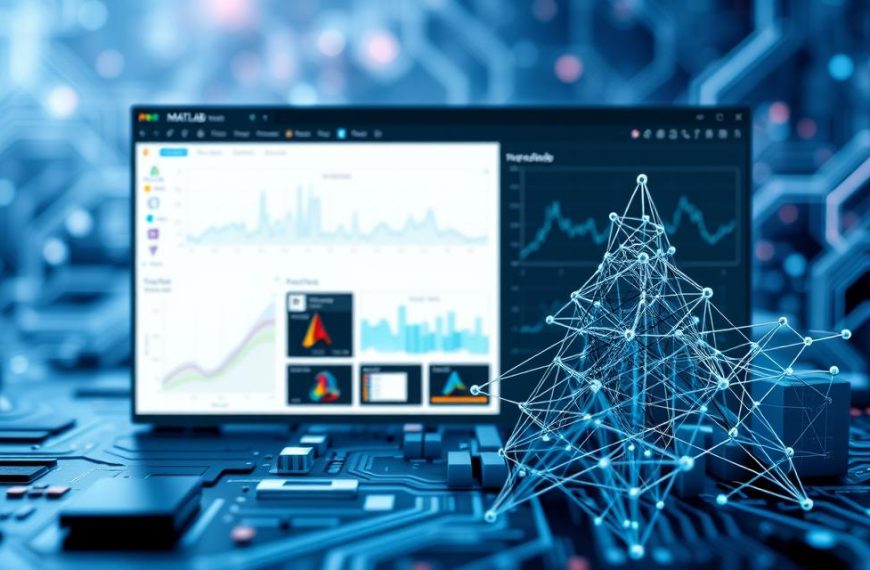Predictive analytics stands out as a powerful tool in the world of data-driven decision-making. By combining statistical techniques with machine learning and AI, it forecasts future outcomes with remarkable precision. This approach is widely used in big data ecosystems to analyze historical and current data, enabling businesses to make informed decisions.
Industries like banking, healthcare, and retail rely on predictive analytics to anticipate trends and optimize operations. For example, Google Cloud offers advanced solutions that integrate machine learning and AI for accurate predictions. These tools help organizations stay ahead by forecasting trends seconds to years in advance.
With the growing volume of data, predictive analytics continues to evolve, offering even greater accuracy. For those exploring these capabilities, Google Cloud provides a $300 credit for new users to experience its predictive analytics tools firsthand.
Introduction to Predictive Analytics
With the rise of big data, predictive analytics has become a cornerstone for future-focused strategies. This approach leverages historical data to forecast future outcomes, enabling businesses to make informed decisions.
Emerging alongside cloud computing and augmented analytics, predictive analytics answers the question, “What might happen next?” Unlike descriptive analytics, which focuses on past events, it provides actionable insights for future planning.
Key components include data mining, pattern recognition, and scenario modeling. These elements work together to identify trends and optimize processes across industries.
Real-world applications are vast:
- Fraud detection in financial transactions.
- Supply chain demand forecasting.
- Patient health outcome predictions in healthcare.
For example, retailers have reduced inventory costs by 22% using predictive stock models. This demonstrates the tangible benefits ofdata analysisin modernbusinessoperations.
How Predictive Analytics Works
Predictive analytics operates through a structured workflow to deliver actionable insights. This process ensures accuracy and reliability, transforming raw data into valuable forecasts. Let’s break down the key steps involved.
Defining the Problem
The first step is clearly identifying the problem or objective. For example, FleetPride used predictive maintenance to optimize operations for over 12,000 vehicles. Establishing clear KPIs and success metrics is crucial for aligning efforts with business goals.
Data Acquisition and Organization
Next, data is collected from multiple sources, such as CRM systems, IoT sensors, and transaction logs. Challenges often arise with unstructured data, like healthcare records. Tools like BigQuery help organize enterprise-scale datasets efficiently.
Data Pre-processing
Raw data often requires cleaning to ensure quality. This includes addressing missing values in retail sales data or detecting anomalies in credit card transactions. Proper pre-processing lays the foundation for accurate predictions.
Model Development
Building predictive models involves selecting the right tools, such as Python, R, or specialized platforms. Hardware requirements for deep learning models must also be considered. This step focuses on creating algorithms that can identify patterns and correlations.
Validation and Deployment
Before deployment, models are rigorously tested using methods like neural networks to validate decision tree outcomes. Once validated, they are integrated into systems via APIs for real-time fraud scoring or dashboards for non-technical stakeholders. Learn more about this process in Google Cloud’s predictive analytics guide.
By following these steps, predictive analytics empowers businesses to make informed decisions and stay ahead in competitive markets.
Key Techniques in Predictive Analytics
Understanding predictive analytics requires a deep dive into its core methods. These techniques transform raw data into actionable insights, enabling businesses to forecast future trends with precision. Three primary methods stand out: regression analysis, decision trees, and neural networks.
Regression Analysis
Regression analysis is a fundamental technique in predictive analytics. It examines relationships between variables, such as how price impacts product demand. For example, linear regression predicts housing prices based on square footage and amenities. However, it has limitations in handling non-linear relationships.
This method is widely used in industries like finance and retail. It helps businesses identify patterns and make data-driven decisions. Despite its simplicity, regression remains a cornerstone of predictive models.
Decision Trees
Decision trees are versatile tools for handling complex datasets. They excel in scenarios with missing values, often managing datasets with 40%+ gaps. In banking, decision trees streamline credit approval workflows by evaluating multiple factors.
One advantage is their visual explainability. Stakeholders can easily interpret the decision-making process, making them ideal for non-technical audiences. This clarity enhances trust in predictive outcomes.
Neural Networks
Neural networks power advanced predictive models, driving 78% of modern recommendation engines. These models mimic the human brain to identify intricate patterns. For instance, LSTM networks forecast stock market trends, while convolutional networks analyze medical imaging.
Hybrid approaches, like random forests and regression-enhanced neural networks, further enhance accuracy. IBM Watson leverages these methods to deliver cutting-edge solutions. Neural networks are indispensable for complex data analysis tasks.
Applications of Predictive Analytics
Predictive analytics is transforming industries by offering actionable insights into future trends. From enhancing financial security to optimizing supply chains, its applications are vast and impactful. Businesses leverage these tools to reduce risk, improve processes, and better understand their customers.
Fraud Detection
Financial institutions rely heavily on predictive analytics for fraud detection. American Express, for example, reduced fraud losses by 38% using advanced predictive models. Real-time transaction scoring systems and behavioral biometrics in mobile banking are key tools in this space.
These systems analyze patterns to flag suspicious activities instantly. This proactive approach minimizes financial losses and enhances customer trust. The integration of AI ensures continuous improvement in detecting evolving fraud tactics.
Customer Segmentation
Predictive analytics plays a crucial role in customer segmentation. Starbucks uses hyper-personalized marketing strategies by clustering customers based on purchasing behavior. This allows for targeted campaigns that resonate with specific groups.
Netflix and Sephora also excel in this area. Netflix recommends shows based on viewing patterns, while Sephora uses AI-driven product suggestions. These strategies boost engagement and drive sales by delivering personalized experiences.
Operational Efficiency
Improving operational efficiency is another major application. DHL enhanced delivery times by 19% using route optimization algorithms. Predictive maintenance in manufacturing and Walmart’s inventory replenishment system are other notable examples.
These tools streamline processes, reduce downtime, and ensure resources are used effectively. The result is a more agile and cost-efficient business operation.
| Industry | Application | Example |
|---|---|---|
| Finance | Fraud Detection | American Express |
| Retail | Customer Segmentation | Starbucks |
| Logistics | Operational Efficiency | DHL |
| Healthcare | Risk Assessment | Geisinger Health |
Benefits of Predictive Analytics
Predictive analytics delivers significant advantages for businesses seeking to optimize operations and drive growth. By leveraging data, organizations gain actionable insights that enhance efficiency and competitiveness. These benefits span across decision-making, risk management, and customer engagement.
Improved Decision-Making
Companies using predictive analytics experience 73% faster decision cycles. This speed allows for proactive strategies, moving away from reactive approaches. For example, Macy’s improved demand forecasting accuracy, reducing overstock and understock issues.
Predictive models enable leaders to anticipate market trends and allocate resources effectively. This leads to smarter investments and better alignment with business goals. The result is a more agile and responsive organization.
Risk Reduction
Predictive analytics plays a crucial role in minimizing risks. Allstate decreased insurance claims costs by 25% through advanced risk modeling. Similarly, credit scoring models in mortgage lending help lenders assess borrower reliability.
Cybersecurity systems also benefit from predictive threat detection. By identifying potential vulnerabilities, businesses can prevent breaches before they occur. This proactive approach safeguards assets and maintains customer trust.
Enhanced Customer Insights
Understanding customer behavior is a key advantage of predictive analytics. Amazon’s recommendation engine drives 35% of total sales by analyzing purchasing patterns. Telecom companies use churn prediction models to retain customers effectively.
Dynamic pricing in the airline industry is another example. By adjusting fares based on demand, airlines maximize revenue while offering competitive rates. These strategies enhance customer satisfaction and loyalty.
In summary, predictive analytics offers transformative benefits for businesses. From faster decision-making to reduced risk and deeper customer insights, it empowers organizations to thrive in a data-driven world.
Predictive Analytics vs. Machine Learning
Predictive analytics and machine learning are often intertwined, yet they serve distinct purposes in data science. While both rely on models and techniques to extract insights, their objectives and applications differ significantly.
In terms of scope, machine learning is a subset of artificial intelligence focused on pattern recognition. Predictive analytics, on the other hand, is an application of data science aimed at generating actionable forecasts. For example, machine learning achieves 89% accuracy in image recognition, while traditional predictive analytics reaches 76%.
Technically, both fields share common methods like regression models. However, they diverge in their approach to unsupervised learning. Machine learning often requires larger datasets and produces complex, less interpretable models, whereas predictive analytics prioritizes clarity and actionable insights.
Implementation also highlights key contrasts. Machine learning demands extensive computational resources and data preprocessing. Predictive analytics, while still data-intensive, focuses on delivering practical outcomes for decision-making. For instance, TensorFlow integration enhances predictive analytics workflows, while AutoML platforms simplify machine learning deployment.
Despite their differences, these fields often work in synergy. Combining predictive analytics with machine learning can unlock new possibilities, such as advanced fraud detection or personalized marketing strategies. This collaboration underscores the evolving landscape of data science.
Conclusion
Predictive analytics has become a cornerstone for modern businesses, driving smarter data-driven decisions and future-proof strategies. Unlike traditional methods, it focuses on forecasting future outcomes with precision. This approach is now used by 82% of Fortune 500 companies, showcasing its widespread adoption.
Emerging trends like edge analytics, quantum computing, and ethical AI are shaping the next phase of predictive analytics. These advancements promise even greater accuracy and scalability. As the market grows to $28 billion by 2026, organizations must stay ahead by leveraging these techniques.
For those ready to explore, resources like IBM Cognos Analytics and Google Cloud’s free tier offer excellent starting points. Certification paths for data professionals further enhance expertise in this transformative field.












